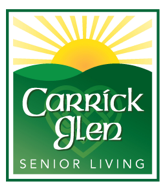Key Takeaways
- Senior living communities offer tailored options like independent living, assisted living, and memory care.
- Independent living supports active lifestyles with services like dining, housekeeping, and transportation.
- Assisted living offers help with daily tasks while preserving independence and privacy.
- Staying at home often includes hidden costs like home repairs, taxes, and in-home care services.
- Senior living costs typically bundle services into one predictable monthly fee, offering more convenience and value.
Your Lifestyle Options in Retirement
Deciding where to spend your retirement years is one of life’s most important choices. For some, staying in a familiar home brings comfort. For others, senior living offers a fresh path full of community, ease, and support. How can you tell what choice is right?
The decision between staying home and moving to senior living should be focused on independence. If one lifestyle gives you a higher quality of life, that’s the right choice. It helps to assess your goals, health, and comfort to narrow down your options.
What Are Your Senior Living Options?
Today’s senior living communities offer more than just a place to live. They offer a lifestyle tailored to your needs.
Independent Living Communities
Independent living is designed for active older adults who want to enjoy a simpler life without the responsibilities of owning and maintaining a home. These communities often include:
- Social opportunities
- Dining services
- Fitness and wellness programs
- Light housekeeping or transportation
In independent living, residents keep full control of their day while gaining the convenience of having support when they need it.
Assisted Living Services
Assisted living provides personalized help with daily routines—such as medication, bathing, or dressing—while still honoring your independence. Residents are never without privacy or autonomy, but they’re not on their own, either. This option is often a welcome solution when caregiving needs begin to grow, or when daily tasks become physically taxing.
Memory Care Programs
Memory care offers safe, structured support for individuals living with dementia or Alzheimer’s. These programs include:
- Environments designed for cognitive needs
- Staff trained in memory care support
- Daily routines that promote calm and engagement
- Therapy programs and engaging activities
Memory care can be a thoughtful way to promote dignity and quality of life, even as memory changes. If your loved one is living with cognitive decline, memory care is often the right choice.
Signs It Might Be Time to Consider a Move
If you’re not sure where to begin, start by looking at daily life and limitations. If you—or a loved one—struggle with certain tasks, it’s likely time to think about senior living.
Daily Activities Are Becoming More Challenging
If everyday tasks like cooking, laundry, or managing medications are starting to feel overwhelming, it may be time to ask: Could I benefit from more support? When daily life becomes more about coping than enjoying, senior living can restore balance.
Home Maintenance Is Overwhelming
From seasonal maintenance to unexpected repairs, your home requires constant attention. Yard work, cleaning, and upkeep might now feel physically demanding or financially draining. The time and energy you spend on maintenance could be better invested in activities that bring you joy and fulfillment. If this is the case, senior living can remove these burdens and replace them with energy for things that matter most.
Social Isolation Is Growing
Human connection is essential at any age. However, many older adults find themselves isolated, which poses its own unique problems. Spending more time alone—especially if driving is no longer an option—can increase feelings of loneliness and lead to long-term health risks. Fortunately, senior living communities offer built-in social opportunities to help residents stay engaged and connected every day.
Safety Concerns Are Increasing
Falls, medication mistakes, or living alone with health conditions can all raise concerns. If you or your family are starting to worry about your safety, it’s a sign worth listening to. A supportive environment can offer both safety and reassurance—without sacrificing your independence.

The Real Cost Comparison: Home vs. Senior Living
Your retirement budget isn’t just about monthly expenses. It’s also about what’s included, what’s hidden, and what brings value to your life. So, it helps to look at your budget to determine what you can actually afford.
Hidden Expenses of Staying Home
Staying in your current home involves many costs that aren’t always obvious at first glance. These expenses can easily break the budget. Aging in place involves:
- Home modifications and accessibility updates
- Property taxes and insurance
- Utilities and maintenance
- In-home care services
These costs can add up over time—and they often increase as needs change.
What’s Included in Senior Living Costs
Senior living communities typically bundle many services into one monthly fee. This offers both convenience and financial predictability. It also often delivers more value than paying for individual services separately. Your senior living budget tends to cover:
- Housing and utilities
- Meals and housekeeping
- Activities and transportation
- Healthcare coordination
Instead of managing multiple services, everything you need is already in place.
Making the Decision That’s Right for You
Retirement isn’t about slowing down. It’s about living well in a way that fits your needs. Whether that means staying at home or transitioning to a community with support and connection, the right option should help you thrive. And here at Carrick Glen Senior Living, we’re ready to offer you the home and lifestyle you deserve.
Here, offer more than just care—we offer a welcoming home in a historic setting. Our team is here to help you explore your options and create a plan that supports your independence every step of the way. Book a tour with us today to come see your future home!



